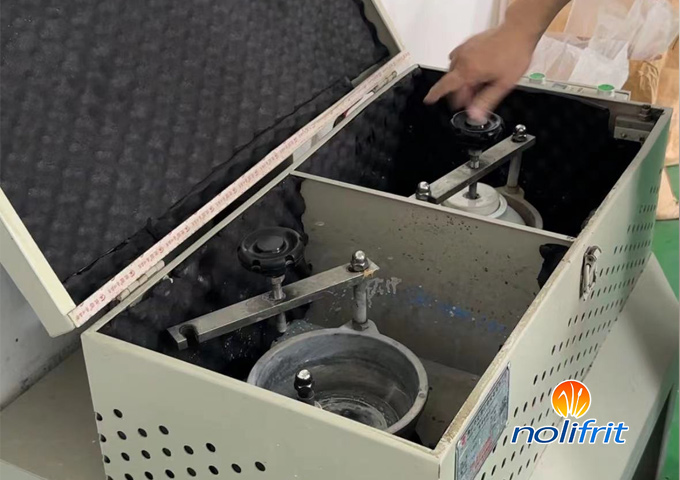The Optimal Loading Amount of Ball Mill
Ball milling is an important part of the enamel process. Many novice enamel factories do not know how to use a ball mill. As an enamel frit manufacturer, Nolifrit will briefly introduce how to determine the optimal loading amount of a ball mill.
The loading amount of grinding media in a standard mill accounts for 50% of the drum volume. Some older ball mills may only use 30% to 40% of the drum volume for media loading, but the principle is the same. For optimally stacked spheres, the void ratio between uniform spherical media is 26%, and for randomly stacked spheres, the void ratio between uniform spherical media is 36.5%. This makes the void ratio of 50% media loading 13%-18.25%. If some product is added on top of this, the material loading is usually close to 25%. As a starting point, a material loading of 25% usually ensures that there is product between and on top of the grinding media. Too little material will cause direct collision of the grinding media, which will increase media wear and reduce efficiency. Too much material loading will buffer the impact of the media and reduce grinding efficiency.

The 25% material loading is just a starting point. The optimal loading must be determined empirically during the grinding operation.
1. Depending on the initial particle size, shape and porosity, many (if not most) materials will become denser as the particle size is reduced and homogenized. The result is a finer but smaller product. The loading must be adjusted based on this volume reduction.
2. Calculate the 25% loading based on the final uncompacted bulk density (if known).
3. Fill the ball mill and run it for a few minutes.
4. Open the ball mill and check the loading.
a. If there is too little material, the exposed grinding media can be clearly seen
b. If there is too much material, it will be difficult to distinguish the shape of the media
C. When the loading is optimal, the media will look like it is covered with snow, and the spherical shape of the grinding media can be vaguely seen
5. During the grinding process, it is necessary to stop the ball mill several times and check the filling of the ball mill.
6. Add materials as needed, record the weight, continue running and check the material status according to the criteria in step 4 above. Please note that when doing this for the first time, the residence time of the material added during the operation in the ball mill is different from the actual required time, so the particle size distribution may deviate or the ball mill needs to run longer.
7. Finally, the total weight of the initial charge and subsequent supplementary materials is the initial charge for the next production run.